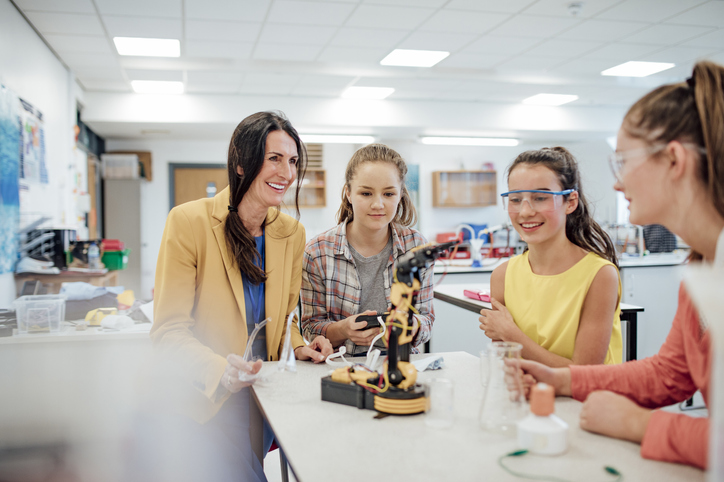It’s known that the number of men working in science, technology, engineering, and mathematical (STEM) industries is higher compared to women. In 2017, research revealed that the STEM workforce was only made up 20% by women, with this figure being 105,470 higher than the numbers from the year before.
Nowadays, the idea that only men are suited for STEM-related careers is changing. Influential women such as Kate Bouman, who firstly engineered the image of a black hole, are now emerging in the industry, proving the progressive shift. In this article, we illustrate examples of how women’s position in STEM careers has changed over the past four decades.
LinkedIn Data Analysis Data revealed that there has been evidence of more females working in STEM. Melina Gates, who is a philanthropist and Microsoft’s former general manager, commented: “Innovation happens when we approach urgent challenges from every different point of view. Bringing women and underrepresented minorities into the field guarantees that we see the full range of solutions to the real problems that people face in the world”.
In 2018, Fitbit made a gaffe that could have been easily avoided, had the company involved a female figure in the project. The company’s period tracker implemented a 10-day cycle to Fitbit devices, despite the huge variance in women’s cycles. Though the technology sector is one of the highest paying in the United States, women still experience a gender pay gap.
Can we tackle bias?
One very important step towards a greater empowerment of women in STEM would be the complete cut out of biases. Historically, during the era of Charles Darwin in the 20th century, women were considered intellectually inferior to men, and were for this reason denied admission into university courses and specific career sectors.

The senior vice president for the American Association of University Women, Laura Segal, commented: “Teachers and parents provide explicit and implicit messages starting in early childhood that boys and men are ‘better’ at math, and the gaps in the professions reinforce the opportunities, culture and lack of role models that perpetuate male dominance”.
Since 2012, universities, schools, and recruitment agencies across the UK have been implementing initiatives to encourage females into STEM-related careers.
In the past, girls purposely avoided studying STEM courses as there were few female role models to stand alongside Marie Curie. This inspiring woman successfully discovered the effects of radiation and her story could inspire many other females to pursue STEM-related careers. But, until recently, she was one of the few female role models in the industry.
In order to tackle this bias, exam boards have implemented more content with famous women in STEM, with female scientists such as Rosalind Franklin — who was hugely involved in the study of DNA — are being taught across the UK.
As a result of this strategy, more female A-level students chose STEM courses (50.3%) against 49.7% male students.
Apprenticeships
The Institution of Mechanical Engineers reported that a lack of experienced STEM workers costs the UK approximately £1.5 billion each year. Although apprenticeships should generally have an equal gender balance, only nine per cent of women actually enrol in STEM apprenticeships.
By informing women about available STEM-related apprenticeships across the country, the government could potentially reduce such disparity.
In 2018, car dealership Lookers, who sell a range of disability cars, launched a female apprenticeship scheme with the aim to acquire a higher number of female apprentices and to offer a positive environment that inspires and attracts women to STEM.
Funding
To resolve the gender gap in STEM, philanthropists have raised $25 million to enhance girls’ interest in STEM and to eliminate the stereotypical idea around men and STEM roles.
It has been reported that many women end up quitting male-dominant work environments, with engineering being a popular example, due to an unhealthy masculine culture. Additionally, not being taken seriously resulted in many women choosing to leave their jobs.
Lyda Hill Philanthropies has established 125 female ambassadors to stand for the different STEM-related careers. Some of the donation will fund grants for women wanting to study STEM courses.
Although significant steps are being taken, for instance in adverts which reflect gender equality, there is still a long way to go and a collaborative work is required to achieve the desired results for more women in STEM.
Authored by Lucy Desai



